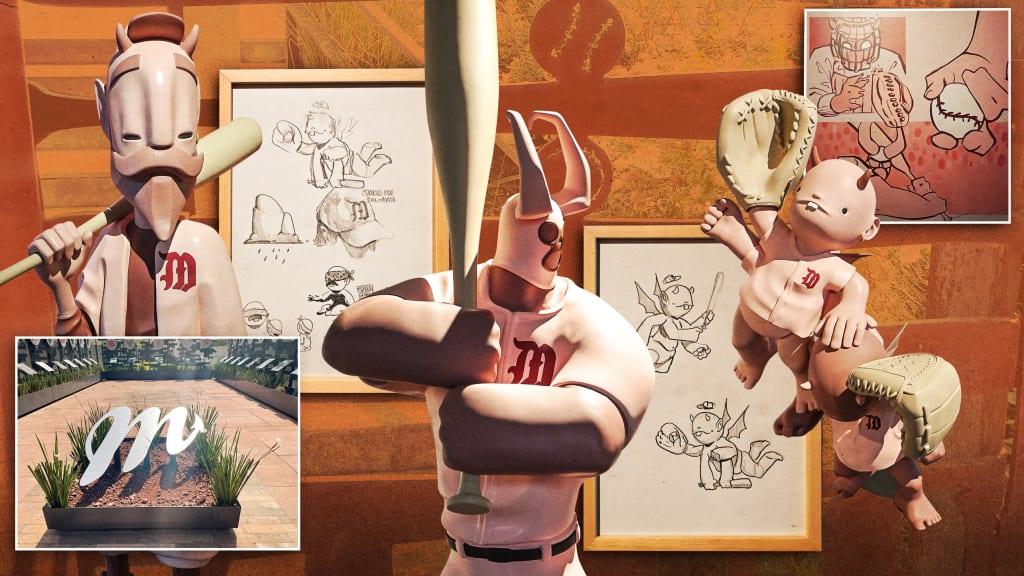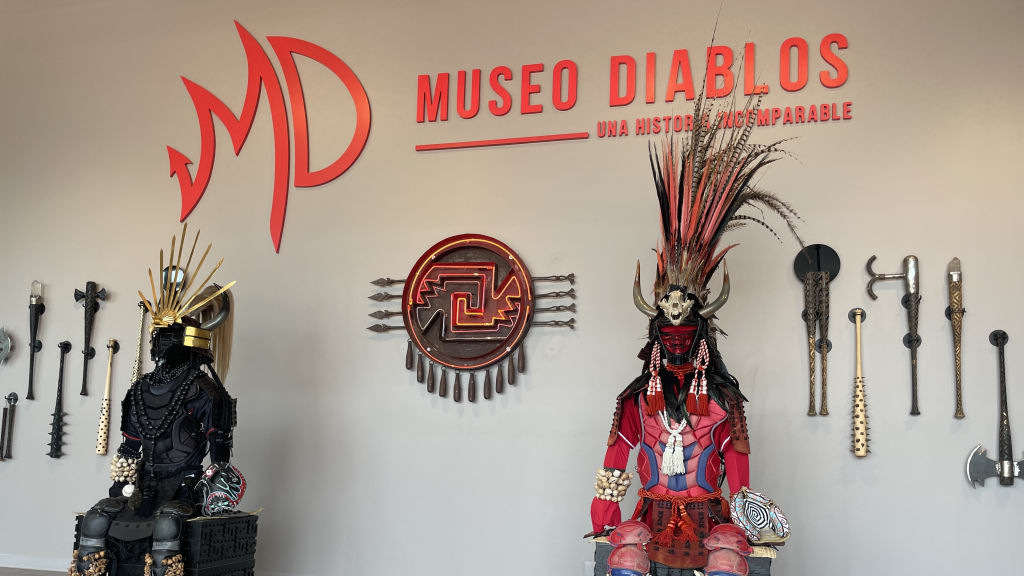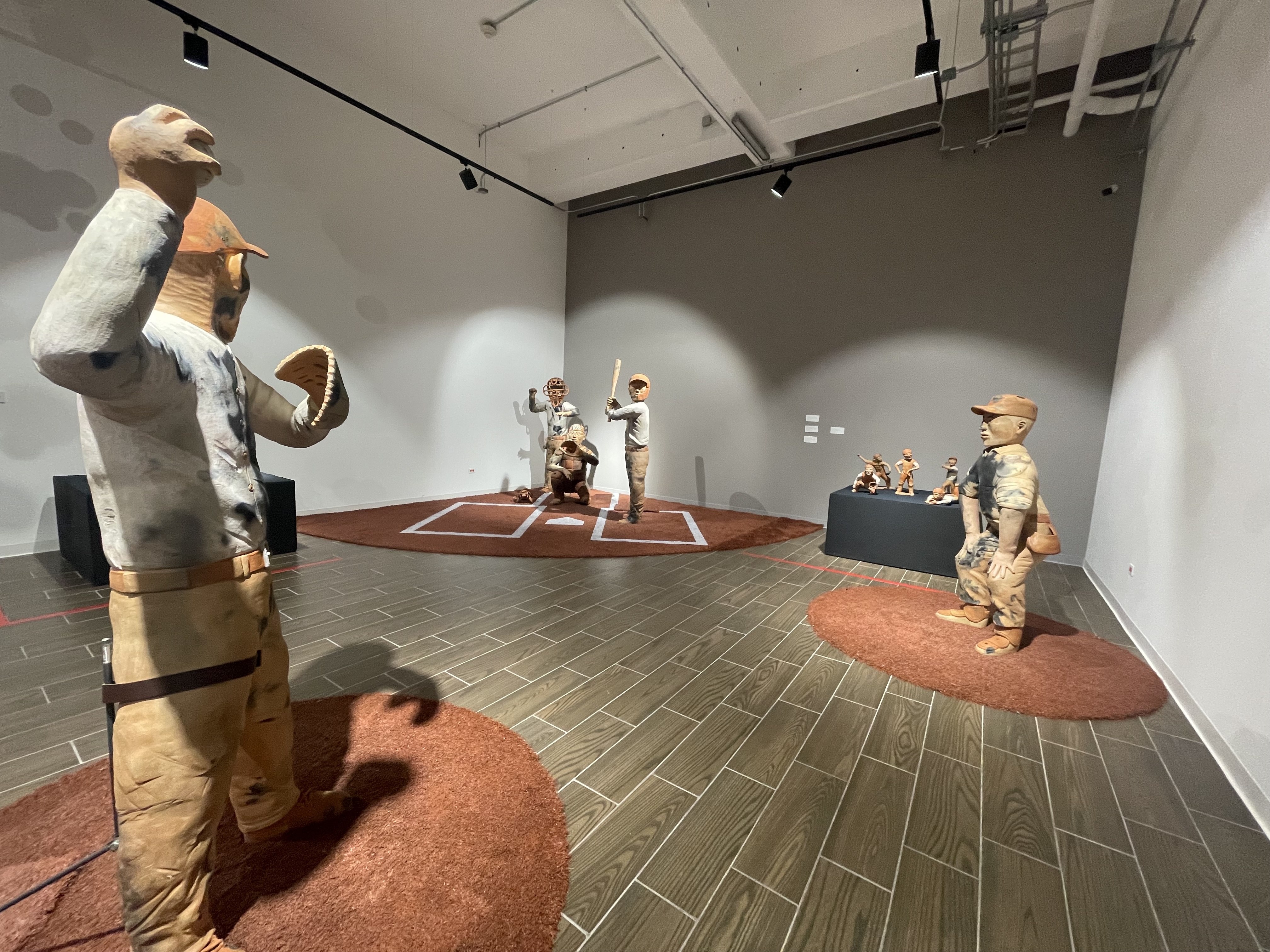
Walk in to Estadio Alfredo Harp Helú, home of the Diablos Rojos del México of the Liga Mexicana de Beisbol and host to this weekend's Mexico City Series, and you'll immediately notice a few touches that make this ballpark stand out from the rest. Opened in March of 2019 -- the first new stadium built in Mexico City in nearly 50 years -- it's clear they didn't skimp on the details.
Wrought iron gates in the shapes of bats and balls ring the facility, while the roof mimics the Diablos' trident logo with luminous, white canopies that offer shade and protection to 11,500 seats. There's a small outdoor garden and Hall of Fame, honoring the greatest players in team history and on the concourse -- as has been a Diablos tradition for nearly 50 years -- there's Los Famosos del Béisbol serving up mouthwatering cochinita tacos.
But there's one more place to check out when you're in town for a game, one that few other stadiums have to offer: Museo Diablos, a museum that highlights both the amazing history of the team and shows off bold baseball-themed art exhibits, as well.

"It's about the experience from the first time you walk in the stadium," Xiadani Morales, the exhibition coordinator, told MLB.com over Zoom recently. "It's all about experience: History, art, food, music, everything."
While many teams may offer up displays or rooms dedicated to their sporting history, it's much more rare for a stadium to have an entire wing devoted to fine art-quality paintings, sculptures, sketches and more.
The idea for the museum came directly from the Harp family, who wanted to connect the community with a team that has nearly 80 years of history.
"They have a foundation in Oaxaca and they try to preserve all the history and culture of the Oaxacan artists," Morales aid. "That's why the main artists here in the museum are from Oaxaca. They try to combine the passion of art and sports, that sports and art are one [in the same]."
While the baseball history portion of the museum features nearly 200 objects on dispay, with a full 360-degree immersive experience, the art exhibit changes on a semi-regular basis. When I visited the museum a few years ago, Francisco Toledo's work, which ranged from skeletal baseball drawings all the way to an impressive, room-sized sculpture of baseball in action, were on display.

This week, ahead of the Rockies-Astros series, a new exhibit from painter, sculptor and tattoo artist Rodrigo Roji opened. Bringing a sense of fun and whimsy to his work, Roji's art features devilish ballplayers standing ready at the plate:

Or trying to make plays in the outfield:

Morales has had been able to witness plenty of people moved by the baseball history and the art that hangs on its walls.
"You can see memories from your grandfather or father or your mom," Morales said. "'Oh, my mom took me to the Foro Sol [the Diablos' previous stadium]. And I remember that piece!' or little kids say, 'Wow, that's amazing!' It's very touching."
The best reaction, though, may come from the artists who are themselves baseball fans. When the Yankees recently played the Diablos before the start of the regular season, Gabriel Mendoza Gagnier made a tapestry commemorating the occasion to give to the visiting ballclub. The reaction blew him away.
"The artist was kind of paralyzed because the fans knew he was the artist of the tapestry," Morales remembered. "They were like, 'Can I take a selfie?' 'Congratulations! It's beautiful, it's precious, you really are an artist.' And this person was like, 'They are talking to me? Really?' They never thought that this could happen because they work in Oaxaca, very far away from the stadium."
As for why a museum blending art and baseball is such a hit in Mexico City, but may not be something you typically find at an American ballpark, Morales -- who is trained as a historian -- has one idea.
"Maybe it's because we have a connection with our past -- the Mesoamerican," Morales said. "We've got juego de pelota in Oaxaca and here in Mexico City, and maybe it evolved into what's now football, baseball, and other sports. I think that we've got this connection in our cells."
